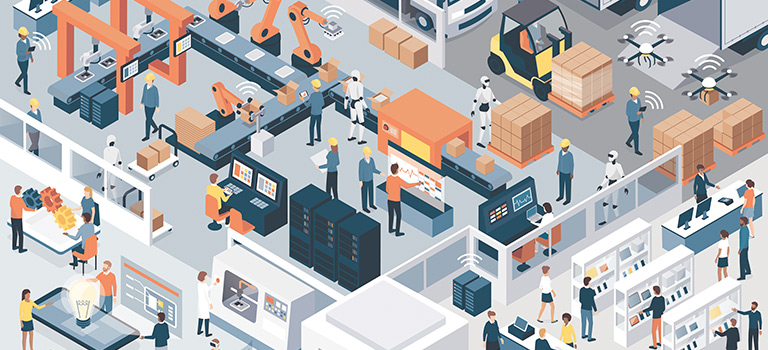Adding automation to your workflow can streamline tasks and boost productivity. Indeed, with advances in technology, more companies are jumping on the trend and reaping the benefits. However, adoption will undoubtedly impact your company’s security.
Here are five things you should know to reduce security risks caused by automation.
Prioritize Security in Automation
One issue with automation, as it relates to security, is that some brands providing solutions are eager to beat competitors to the market. In fact, they are so eager, that they often overlook security concerns during the development process.
When your company starts communicating with providers, ask about built-in security measures. If the brand’s representatives can’t give satisfactory answers, look elsewhere. Alternatively, agree on a trial period that allows you to get acquainted with the product’s features and see if they’re sufficiently secure.
Don’t Scale Too Fast
Some companies primarily decide to invest in automation tools because others in their industry are doing it. In fact, in 2018, the market experienced a 63% growth. Additionally, this growth is predicted to reach $1.3 Billion by the end 2019. Businesses believe that failing to follow suit would make them fall behind.
However, if you ramp up your automation usage without having a purpose, security may get overlooked. Therefore, before any new investment in automation, you must assess the likely impacts on operations. If you can’t scale up without keeping your systems and infrastructure secure, now is not the right time to invest.
Stay Up-to-Date
Outdated equipment is a playground for hackers because it lacks security patches that address known vulnerabilities. Sometimes, entire computers or operating systems pose risks rather than one program. Specific industries are particularly vulnerable to old systems.
For example, when a company starts using automation, it may need to address pain points relating to legacy computer systems with ill-adapted security measures. Using automation safely may necessitate an overhaul of all the computers with new equipment connected.
You’ll also need to update the automation software itself. Some providers do that on their end by pushing security patches and features to customers via the cloud. In other cases, you’ll need to check for updates and install them manually. Keeping everything up-to-date is an easy and effective way to remain mindful of security.
Consider Automating Cybersecurity
Although automation can open your infrastructure to new security risks, it can also make it more secure. One 2017 survey found that 87% of cybersecurity professionals in the U.S. already use artificial intelligence (AI) in their strategies.
AI is only one type of automation, but 99% of those responding to the survey believed it could improve cybersecurity through features, like better threat detection. On the other hand, survey participants worried about criminals using AI for more advanced attacks.
Whether you use AI for cybersecurity or manual tasks automation, always weigh the pros and cons. Automation is not a magic fix for all your woes. However, when used strategically, it could tackle issues and make your responsibilities more manageable.
Train Your Employees
Many people often bring up fears of how automation will replace their jobs. However, one way to avoid this possibility is to up-skill employees — provide them with the knowledge to remain relevant. For example, Amazon plans to retrain one-third of its workforce, spending $700 million to reduce the adverse effects of automation on employee relevance.
Upskilling is valuable, but education should ideally teach employees how to use automation tools while staying mindful of security. For example, an untrained is more likely to make errors while working with automation, leaving the system open to attacks.
The more familiar your employees are with how an automated tool should function, the easier it is to notice unusual behavior that could indicate a successful infiltration. Whether the automated tool is a piece of robotic equipment or software that extracts text from forms, workers need time to learn the tools and understand what constitutes expected functionality.
Set up a channel through which people can report anything that seems odd about the automated tool — cybersecurity-related or not. As a result, they’ll see that barriers don’t prevent them from speaking up.
Responsible Automation Can Strengthen Cybersecurity
The five tips above highlight why automation does not always compromise a company’s cybersecurity aims. However, be careful regarding how, when, and why you implement automation. Using discernment can keep your company safe from attack.
Tags: AI, Artificial Intelligence, Automation, Cybersecurity, employee protocol, Security, Workplace


